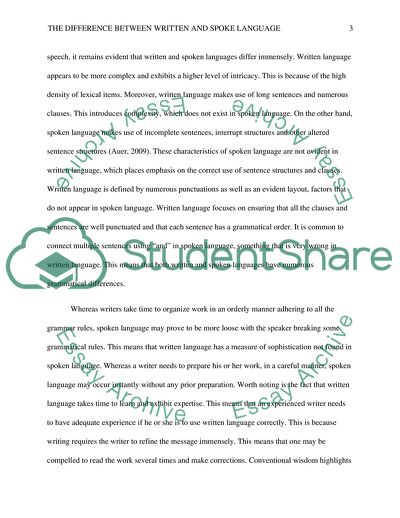Cite this document
(The Difference between Written and Spoke Language Coursework Example | Topics and Well Written Essays - 2000 words, n.d.)
The Difference between Written and Spoke Language Coursework Example | Topics and Well Written Essays - 2000 words. https://studentshare.org/education/1852709-the-difference-between-written-and-spoke-language
The Difference between Written and Spoke Language Coursework Example | Topics and Well Written Essays - 2000 words. https://studentshare.org/education/1852709-the-difference-between-written-and-spoke-language
(The Difference Between Written and Spoke Language Coursework Example | Topics and Well Written Essays - 2000 Words)
The Difference Between Written and Spoke Language Coursework Example | Topics and Well Written Essays - 2000 Words. https://studentshare.org/education/1852709-the-difference-between-written-and-spoke-language.
The Difference Between Written and Spoke Language Coursework Example | Topics and Well Written Essays - 2000 Words. https://studentshare.org/education/1852709-the-difference-between-written-and-spoke-language.
“The Difference Between Written and Spoke Language Coursework Example | Topics and Well Written Essays - 2000 Words”. https://studentshare.org/education/1852709-the-difference-between-written-and-spoke-language.


